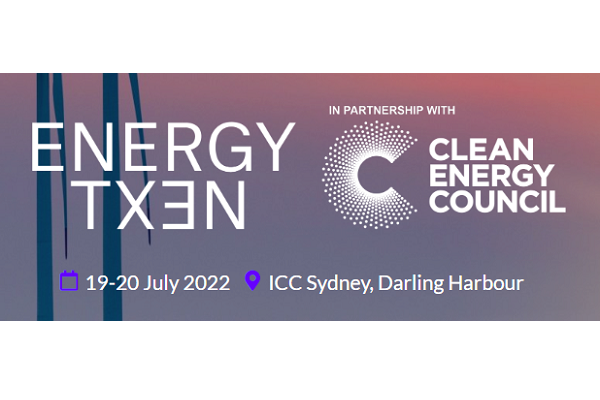Energy Next 2022 schedule revealed
Energy Next 2022, a free-to-attend B2B exhibition showcasing the latest clean energy innovation and technologies, held alongside Clean Energy Council’s Australian Clean Energy Summit, has released its schedule.
The event will be held at the International Convention Centre (ICC) in Sydney on 19-20 July 2022 and is free to register here. A full agenda of the workshop and technical sessions is available here with some listed below.
ADVERTISEMENT
19 July at 13:45 – Vehicle-to-grid: benefits, challenges and the pathway to mainstream adoption
Vehicle-to-Grid (V2G) capabilities, which enable electric vehicles to discharge power from their batteries for external uses, epitomise the coupling of the electricity and transport sectors, through common use of a single asset – the vehicle’s battery.
Australian National University research fellow Dr. Kathryn Lucas-Healey hosts the session, explaining that to thrive at the nexus of these large and well-established sectors, V2G services must deliver technical, economic and social values to many stakeholders.
20 July at 10:55 – Aluminium ion battery – A game-changer in energy storage industry
BESS subject matter expert at Zinfra Brisbane, Shaikat Debnath discusses the perspective of Aluminium ion batteries and how this battery has the potential to be a real game-changer in the energy storage industry of Australia.
Lithium-ion batteries (LIB) have exhibited some attractive features such as low redox voltage and very high gravimetric capacity which has made LIB the most suitable energy storage system. However, the scarcity of lithium mineral on earth, its high cost and the flammable, poisonous and volatile electrolytes used in the LIB chemistry have put the future of lithium-based batteries into question.
20 July at 14:00 – Stand Alone Power Systems: opportunities and challenges for edge-of-grid energy reliability
University of Wollongong research fellow Jonathan Knott looks at recent changes to the regulatory environment in Australia and how they now enable Australian electricity network service providers (NSPs) to consider microgrids installed as stand-alone power supplies (SAPS) as an alternative to replacement of traditional ‘poles and wires’ for supply of electricity to customers.
SAPS are particularly attractive where there is low load density and high bushfire risk and many Distribution NSPs are undertaking a range of independent trials.
Deployment of SAPS technology has the potential to directly impact the quality and reliability of electricity supply, especially to rural and remote customers. It will also open up new opportunities for maintaining essential services to these consumers, communities and emergency services during bushfires, heatwaves and other extreme climatic events – providing additional value and benefits for both end-users and utilities alike.
-
ADVERTISEMENT
-
ADVERTISEMENT


